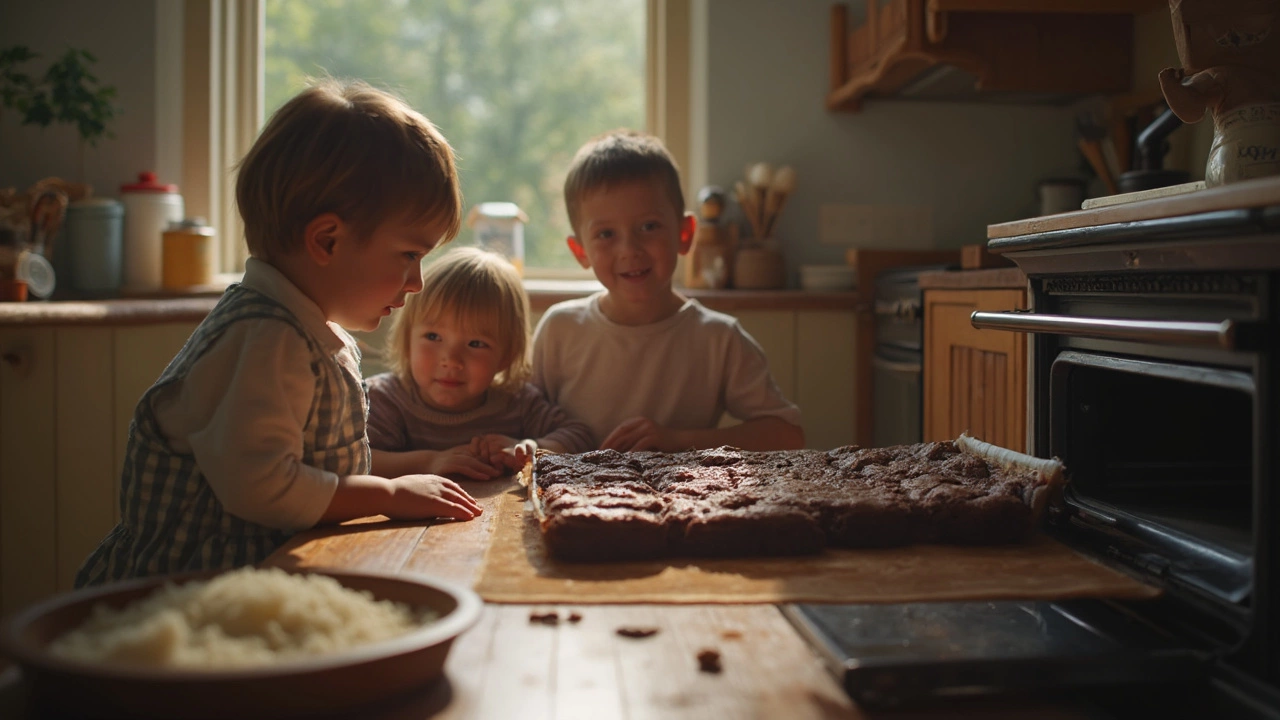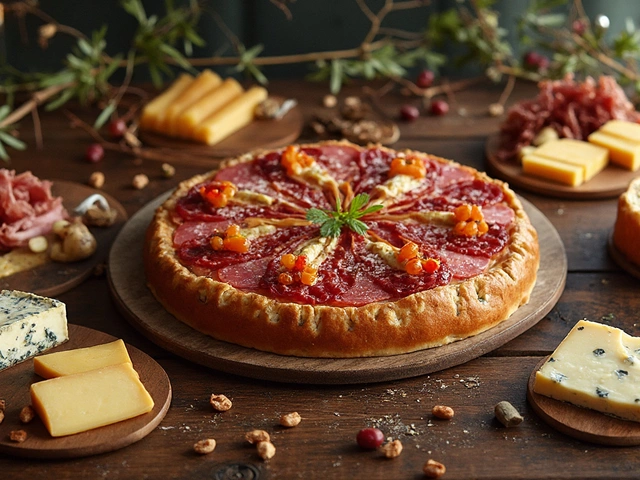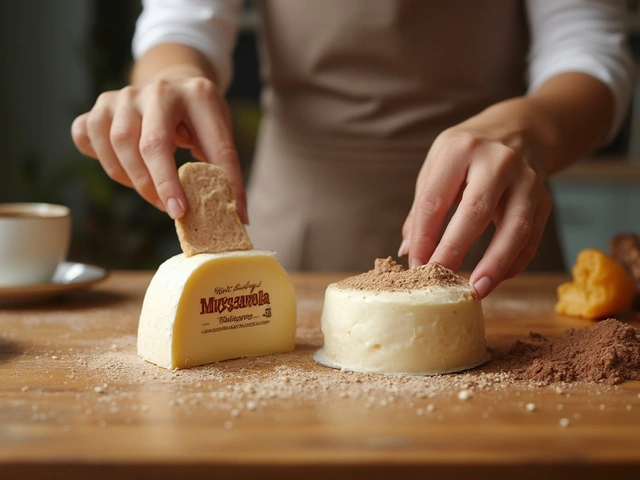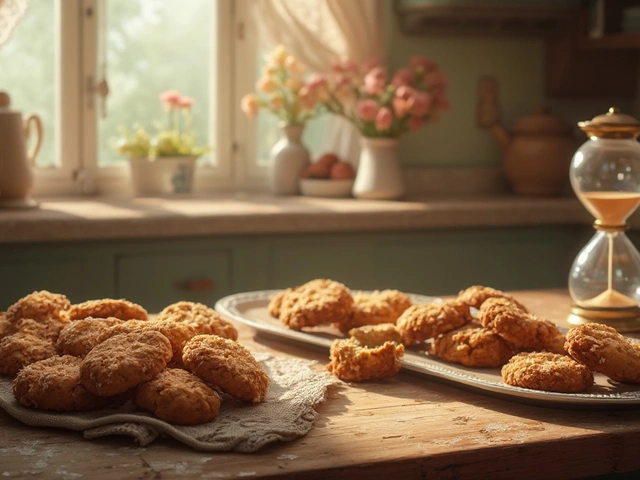Stuck mid-bake and just realized you’ve got zero toothpicks left? Don’t stress. Knowing when brownies are perfectly baked isn’t all about poking them—there’s plenty more you can do. Actually, using a toothpick isn’t even the most reliable way, since brownies are meant to be fudgy, not dry like cake.
The truth is, your eyes and fingers are your best baking buddies here. From how brownies shine to how they bounce back when touched, there are easy tricks to make sure you don’t end up with raw centers or overbaked bricks. Not everyone loves sludgy brownies, and nobody wants them crumbling apart.
Keep reading for real-world tips on how to nail brownie doneness without stabbing your bake. No special equipment, no fancy moves, just common sense and a little kitchen confidence.
- Why You Need Toothpick Alternatives
- Visual Signs Your Brownies Are Ready
- Touch and Texture Checks
- Smell and Sound Clues
- Timing and Common Mistakes
Why You Need Toothpick Alternatives
Look, most people have used the good old toothpick trick to check if brownies are done. But here’s the catch: brownies aren’t cake. You actually want a bit of goo on that toothpick because that means you’ll get that classic fudgy center everyone loves. If you keep baking till a toothpick comes out totally clean, you’ll probably end up with dry brownies—definitely not the goal.
And let’s be real—how often do you actually remember to buy toothpicks? Sooner or later, you’ll be hunting around the kitchen for a substitute and wondering if there’s a better way. Good news: there is.
Using other methods doesn’t just save you in an emergency—it actually gives you more control. You learn to trust your senses, and those skills help with all kinds of baking tips. Plus, poking your brownies leaves little holes, and that can ruin the pretty crust on top. Not cool if you’re trying to impress.
Check out these quick brownie facts that show why alternatives matter:
| Fact | Why It Matters |
|---|---|
| Toothpicks often make brownies dry | Brownies keep baking after you pull them; a clean toothpick is usually too late |
| Fudgy texture is a key quality | Requires trusting gooey signs, not just tools |
| Toothpicks aren’t always available | Knowing extra methods means you won’t get stuck mid-bake |
| Poking holes ruins crackly tops | Visual signs let you keep brownies looking perfect |
So, learning new ways to test brownies can save your bake and keep your brownies looking and tasting just right, no matter what tools you’ve got (or don’t have) in the drawer.
Visual Signs Your Brownies Are Ready
Checking brownies without a toothpick? Just look at them. No fancy tricks—your eyes will tell you a lot. For starters, pay attention to the color. Brownies are usually done when the edges turn a bit darker than the middle and you see a slight pull away from the pan. That means the outside is baked enough to contract a little.
Glossy tops are super common while brownies bake. But when they’re done, you’ll notice the shiny layer turns kind of matte or dull. If the top still looks wet and jiggly, leave them in a few more minutes. A crackly top is also a good sign—people actually love that finish!
Here’s what else to check for:
- The center should look set and not liquid. You don’t want it swimming when you gently shake the pan. A bit of wobble is okay for fudgy brownies, but it shouldn’t look like batter.
- The edges might look firmer and even start to pull away from the pan—super reliable sign you’re almost there.
- If you see little spots where the surface is starting to pull ever-so-slightly from the sides, you’re in the home stretch.
Just for fun, here’s a quick comparison to help keep things straight. No need to memorize—just glance and trust your gut in the kitchen:
| Visual Cue | What It Means |
|---|---|
| Shiny, jiggly top | Batter isn’t baked; needs more time |
| Matte or crackly top | Usually done or nearly there |
| Edges pulling away | Reliably finished |
| Overly brown/dry edges | Overbaked—take them out right away |
| Uniform color, no wet spots | Good to go |
So, don’t get hung up about the toothpick test. Let your eyes guide you. When the top isn’t shiny, the edges pull away, and the center looks firm, you’re about to bite into the perfect brownies.
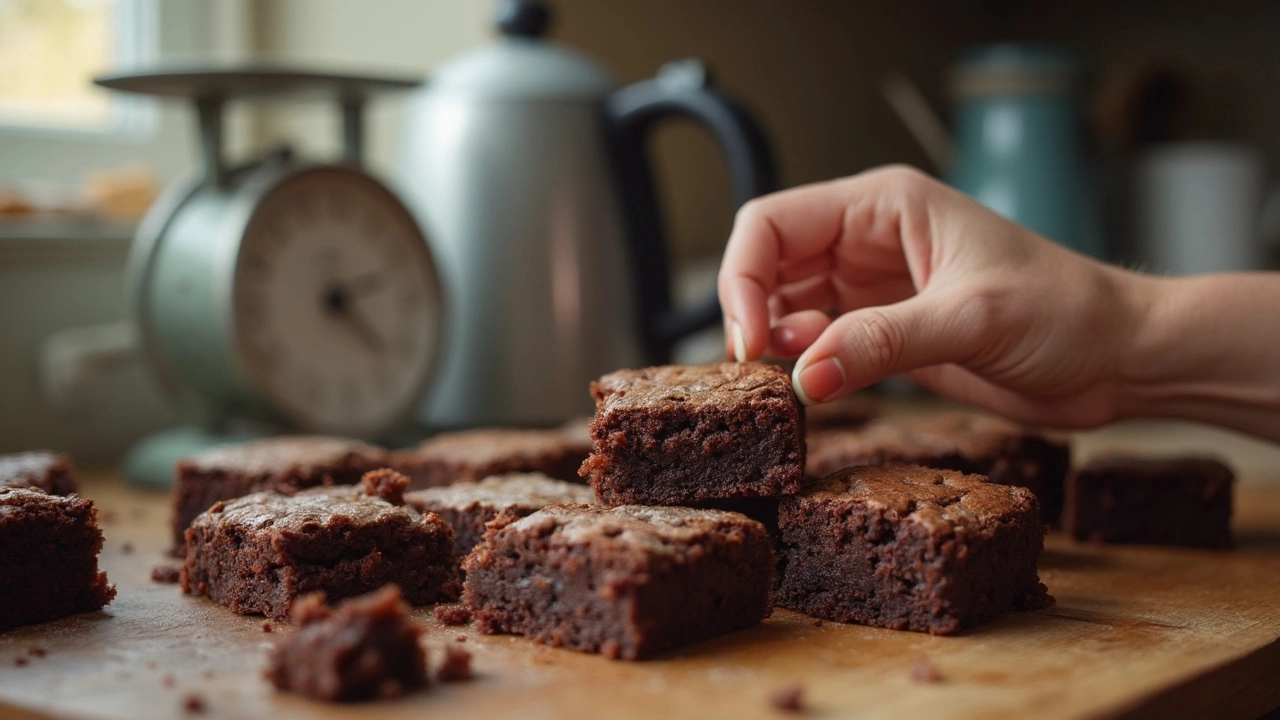
Touch and Texture Checks
If you want to check brownies for doneness without a toothpick, your hands give you the best clues. Don’t be afraid to tap or gently press the surface—this simple check tells you a lot. When brownies are almost done, the edges pull back just a little from the pan, while the center looks set but still soft.
Here’s a quick test: nudge the center of the tray with a fingertip (make sure it’s clean, and be careful—it’s hot!). If the brownies feel very jiggly or your finger sinks into wet batter, they’re not ready. But if the top springs back slightly and your finger comes away clean, you’ve nailed the baking time. A soft, fudgy feel under the crust is what you want—not soupy, but not totally firm either.
Bakers usually agree: if you like gooey, chewy brownies, pull them out when the top feels set but still a bit soft underneath. For cake-like brownies, wait until the surface feels firmer to the touch, and the middle offers some gentle resistance when pressed. Don’t worry if the top cracks a bit—that’s totally normal and a sign you’re on the right track.
- Press gently in the center. If the surface cracks and your finger doesn’t leave a dent, brownies are likely done.
- Check texture at the edges. If the edges feel set and aren’t jiggling, it’s a good sign.
- A pan that slightly jiggles as a whole but doesn’t ripple in the center means they’re ready to cool.
Always let brownies cool before cutting—residual heat finishes off the baking and helps them hold together.
Smell and Sound Clues
If you can’t get your brownies’ doneness by sight or touch, your nose and ears can help more than you think. Smell gives away a lot. When brownies are almost ready, your kitchen will fill with a rich, chocolatey aroma. It should smell deep and toasty, never burnt or sharp. If you start to smell anything even hinting at burnt chocolate, it’s time to yank them out.
One cool trick bakers use: listen to the sizzle. When brownies are still baking, you’ll hear a slight bubbling or gentle hiss coming from the oven. That’s the gooey batter cooking and steam escaping. As they near the finish line, those little sizzling sounds die down. If you notice the noise has mostly stopped, it’s a good sign the moisture has mostly cooked off and the brownies are set.
- If the chocolate smell is strong, rich, and a bit toasted—it’s time to check doneness.
- If you hear a soft crackling or bubbling that gets quieter, you’re probably close.
- Never rely on smell alone; use it as a backup with sight and touch tests for best results.
Just for fun, here’s how some common doneness signals stack up in real kitchens:
| Test | Reliability (1-5) | Best for |
|---|---|---|
| Smell | 4 | Experienced bakers |
| Sound | 3 | Thin brownies, glass pans |
| Visual | 5 | All bakers |
| Touch | 5 | Soft or fudgy brownies |
Trust your senses and remember, brownies actually keep cooking a bit after you pull them out, thanks to heat left in the pan. Relying on smell and sound can feel odd at first, but it’s a handy backup when you’re out of toothpicks or want to perfect that brownies game.

Timing and Common Mistakes
People often think there’s a perfect minute when brownies reach peak deliciousness, but let’s be honest—ovens aren’t always perfect, and neither are we. While most recipes say 20 to 30 minutes at 350°F (175°C), that’s just a starting point. Your oven’s real temperature could be off by 10-20 degrees, which can mess things up. Investing in an oven thermometer pays off if you bake a lot. For brownies with that classic fudgy texture, most bakers recommend pulling them out when the edges are set, but the middle still looks a tiny bit undercooked.
If you want to be precise, watch for these times based on pan size and oven type:
| Oven Temp | Pan Size | Time Range |
|---|---|---|
| 350°F (175°C) | 8x8 inch | 22-28 min |
| 350°F (175°C) | 9x13 inch | 25-35 min |
| 325°F (163°C) | 8x8 inch | 25-30 min |
Common mistakes sneak up fast. Here’s what folks get wrong:
- brownies overbake quickly—keep a timer handy, but don’t skip the look and touch tests towards the end.
- Cutting right after baking might seem tempting, but brownies keep cooking as they cool. That center firms up and flavors finish mingling. Always let them cool for at least 30 minutes before slicing.
- Assuming every oven bakes the same isn’t true. Some ovens have hot spots, so try rotating your pan halfway through.
- Ignoring batter thickness matters too. Thicker batter takes longer, thin spreads bake faster. Adjust as needed if you change up the recipe or use a different pan size.
- Peeking too often lets out heat, making the bake uneven. Try to check through the oven glass instead.
If you go by the bake time alone, you might miss that sweet spot where brownies are just the right kind of gooey inside. Combine the clock with a few of those look and touch cues for reliable results every single time.

